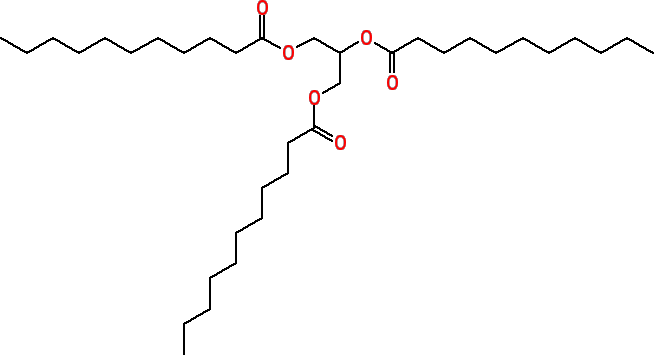Triundecanoin
Safety Information
U.S. Food and Drug Administration (FDA)
The U.S. Food and Drug Administration (FDA) has reviewed the safety of tristearin and approved its use as a multipurpose additive for direct addition to food. The FDA has also approved the following ingredients for use as indirect food additives: trilaurin, trimyristin, triolein, tripalmitin, tristearin and glyceryl triacetyl hydroxystearate.
Expert Panel for Cosmetic Ingredient Safety
The safety of the glyceryl triesters has been assessed by the Expert Panel for Cosmetic Ingredient Safety.
The Expert Panel evaluated the scientific data and concluded that trilaurin, triarachidin, tribehenin, tricaprin, tricaprylin, trierucin, triheptanoin, triheptylundecanoin, triisononanoin, triisopalmitin, triisostearin, trilinolein, trilinolenin, trimyristin, trioctanoin, triolein, tripalmitin, tripalmitolein, triricinolein, tristearin, triundecanoin, glyceryl triacetyl hydroxystearate, glyceryl triacetyl ricinoleate and glyceryl stearate diacetate were safe as used in cosmetics and personal care products.
The Expert Panel noted that metabolism data indicated that glyceryl triesters followed the same metabolic pathways as fats in food. They were split into monoglycerides, free fatty acids, and glycerol. All of which were absorbed into the intestinal mucosa and metabolized further. Therefore, oral exposure to these compounds was not a concern.
Triolein was not absorbed through the skin (the oil remained on the application site) or only slight absorption was seen. Dermal application was not associated with significant irritation. Ocular exposures were, at most, mildly irritating to eyes. No evidence of sensitization or photosensitization were seen. These compounds were not genotoxic in a number of in vitro and in vitro assay systems.
Tricaprylin, trioctanoin and triolein have historically been used as vehicles in carcinogenicity testing of other chemicals. As part of an effort to evaluate vehicles used in carcinogenicity studies, the National Toxicology Program (NTP) conducted a 2-year carcinogenicity study with tricaprylin. The study concluded that tricaprylin did not offer significant advantages over corn oil as a vehicle in carcinogenicity studies. Trilaurin inhibited the formation of neoplasms initiated by dimethybenzanthracene (DMBA) and promoted by croton oil. Clinical tests of trilaurin at 36.3% in a product applied to the skin produced no irritation reactions.
Trilaurin, tristearin and tribehenin at 40%, 1.68% and 0.38%, respectively, in products were also negative in repeat insult patch tests. Tristearin at 0.32% in a product induced transient, mild to moderate, ocular irritation after instillation into the eyes of human subjects.
Link to FDA Code of Federal Regulations for glyceryl tristearate (tristearin) and certain fatty acids reacted with glycerol
http://www.accessdata.fda.gov/scripts/cdrh/cfdocs/cfcfr/CFRSearch.cfm?fr…
http://www.accessdata.fda.gov/scripts/cdrh/cfdocs/cfcfr/CFRSearch.cfm?fr…
If they are derived from plants, the glyceryl triesters may be used in cosmetics and personal care products marketed in Europe according to the general provisions of the Cosmetics Regulation of the European Union. Ingredients of animal origin must comply with European Union animal by-products regulations.
Link to the EU Cosmetic Regulation: http://europa.eu/legislation_summaries/consumers/product_labelling_and_p…
